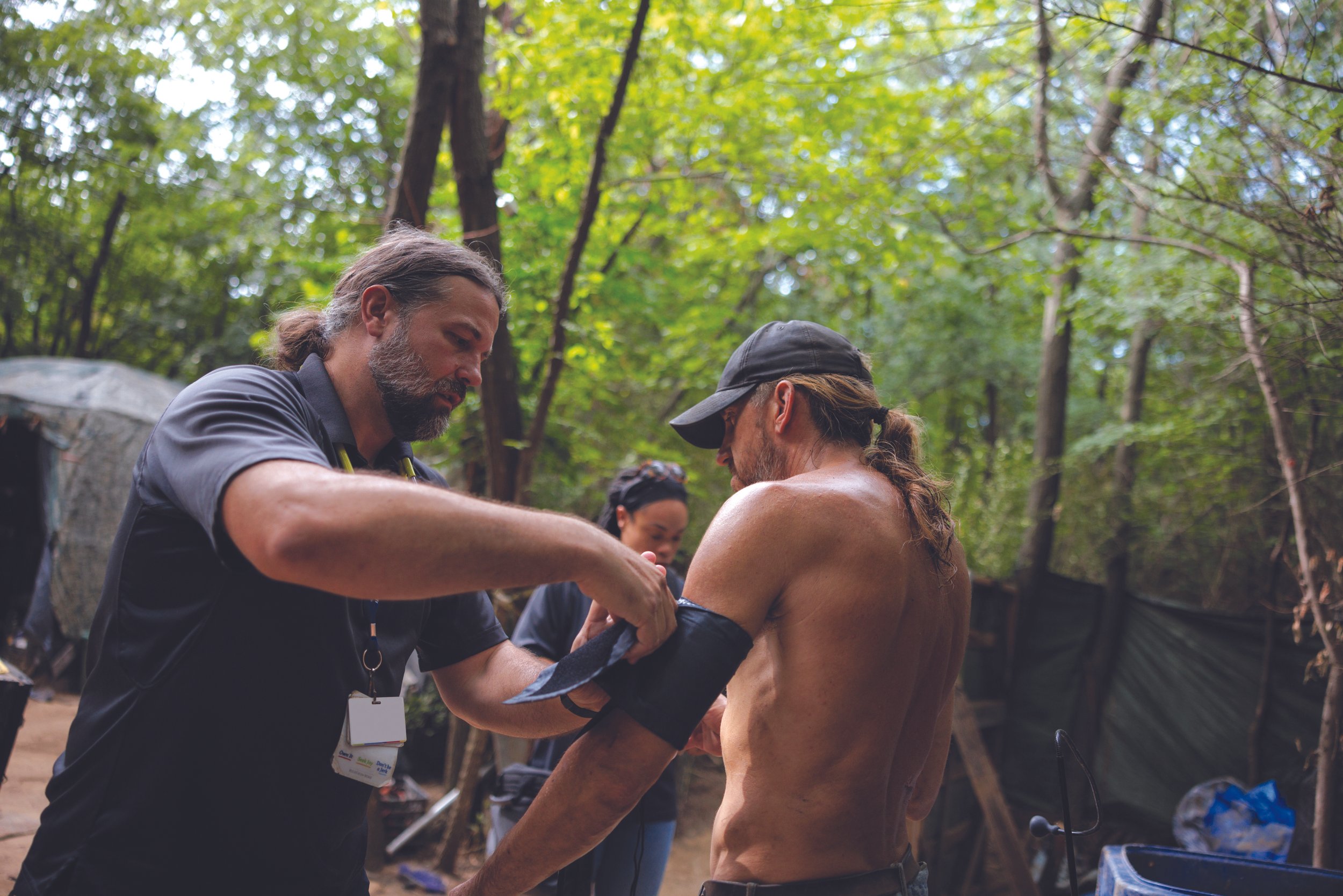The Street Doctor
“Street medicine is about taking whole-person care to people right they are, in an unsheltered setting, whether that’s abandoned buildings, sidewalks, tents, cars.” Joel Hunt, PA ‘08
By Rachel Fairbank
Joel Hunt and his team start every day with a plan. On a recent day in January, their initial goal was to visit a man and woman they knew were living in a nearby abandoned building, a panhandler who was known to frequent a specific intersection, and a group of people living in a nearby encampment. However, as the day went by, everything changed, due to the fact that some of their patients had relocated, while others they hadn’t planned on seeing needed help.
“It inevitably never goes as planned,” says Hunt, a physician assistant who specializes in street medicine in Fort Worth, Texas. “Street medicine is about taking whole-person care to people right where they are, in an unsheltered setting, whether that’s abandoned buildings, sidewalks, tents, cars,” Hunt says. They get their referrals for patients from a number of places, whether from social workers, law enforcement officers, or just word-of-mouth.
Whatever needs or environments they encounter, their goal is to accommodate them the best they can, whether it’s providing a health check-up, prescribing medications, or getting additional community organizations involved. “In order to be successful, we have to collaborate,” Hunt says. This includes bringing in other medical specialties beyond just primary care, along with social services and outreach agencies. “Street medicine is not something that is self-contained,” he says.
BRINGING HEALTH CARE TO THOSE WHO CAN’T ACCESS IT
Hunt found street medicine by accident. When he graduated from the University of Utah’s PA program in 2008, he found a job in Salt Lake City working for a local clinic that provided services to homeless people. What he noticed was that many were unable to access care due to their circumstances, which led him to get involved with street medicine, so that he could reach the patients who needed help but were unable to come to the clinic.
As Hunt notes, there are a number of substantial barriers for homeless people to access health care, whether it’s having bus money, a way to schedule appointments, or even a reliable way of tracking the time. “There’s also just the life of homelessness, where you have to worry about so many immediate needs that next month’s appointment is just overshadowed by the more pressing, immediate needs of survival,” Hunt says.
From this beginning, Hunt has been involved in the formation of three street medicine programs—one in Salt Lake City, two in Fort Worth—and has also been an instrumental part of setting up the Street Medicine Fellowship in Fort Worth, only the second of its kind in the nation, which offers a year-long program that trains resident doctors in the practice of street medicine.
MEDICAL ISSUES TEND TO BE THE USUAL CONDITIONS
Although Hunt entered street medicine expecting to see a wide variety of unusual health issues, his experience has been that his patients tend to mostly have the usual health conditions, such as high blood pressure, diabetes, asthma, or COPD. “It’s pretty much everything you see at a normal community primary care clinic,” Hunt says. The big issue is that “it’s progressed to a point that’s well beyond where people of that age would usually be. It’s untreated or undertreated.”
Hunt also tends to see a lot of issues that stem directly from being homeless, whether it’s exposure to the elements, such as heatstroke or frostbite, wounds from street hazards, such as getting hit by a car or getting cut by sharp metal or glass, substance abuse, or trauma.
Moving forward, Hunt plans to stay involved in street medicine, as the people he’s been able to serve, and the people he’s been fortunate to work with, have given him purpose. “The reason I wanted to go into primary care to begin with was to have that ongoing relationship with people, and helping them in whatever way we could,” Hunt says. “This is that times 100, in terms of going into their homes and their spaces, at what is arguably the lowest point of their lives. Being able to affect change by connecting them to resources and by being part of an intervention that is a solution, that is what keeps me in this.”


